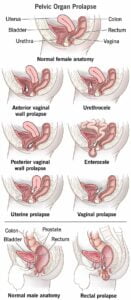Acute Coronary Syndrome: A Comprehensive Overview
Introduction
Acute Coronary Syndrome (ACS) encompasses a spectrum of conditions associated with a sudden decrease in blood flow to the heart muscle. This group of conditions includes myocardial infarction (heart attack) and unstable angina.
A myocardial infarction occurs due to the death of heart cells, which can lead to significant damage or destruction of heart tissue. Unstable angina, on the other hand, is characterized by a reduction in blood flow that is insufficient to cause cell death but may elevate the risk of a heart attack.
ACS is often marked by intense chest pain or discomfort and constitutes a medical emergency requiring immediate diagnosis and intervention. Treatment objectives focus on restoring blood flow, managing complications, and preventing future incidents.
Symptomatology
Symptoms of ACS typically emerge abruptly and may include:
- Chest pain or discomfort, often described as an ache, pressure, tightness, or burning sensation, also known as angina.
- Pain radiating from the chest to other body parts, such as shoulders, arms, upper abdomen, back, neck, or jaw.
- Nausea or vomiting.
- Indigestion.
- Shortness of breath (dyspnea).
- Sudden, profuse sweating.
- Rapid heartbeat.
- Lightheadedness or dizziness.
- Syncope (fainting).
- Unusual fatigue.
Chest pain is the most prevalent symptom, but the manifestation of symptoms can vary significantly based on age, gender, and other health conditions. Women, older adults, and individuals with diabetes are more likely to experience atypical symptoms, including those without chest pain.
Seeking Medical Attention
Given that ACS is a medical emergency, any chest pain or discomfort should prompt immediate medical evaluation. These symptoms could indicate various life-threatening conditions. It is crucial to seek emergency medical assistance and not to drive oneself to the hospital.
Etiology
ACS typically stems from the accumulation of fatty deposits (plaque) within the coronary arteries—the vessels supplying blood, oxygen, and nutrients to the heart muscle. When plaque ruptures, it can lead to the formation of a blood clot, obstructing blood flow and potentially causing cell death and tissue damage, resulting in a heart attack.
A reduction in oxygen supply that does not lead to cell death can still impair heart muscle function, either transiently or permanently. This scenario, when not culminating in cell death, is referred to as unstable angina.
Risk Factors
Risk factors for ACS mirror those for other forms of heart disease and include:
- Aging.
- Hypertension (high blood pressure).
- Hypercholesterolemia (high blood cholesterol).
- Tobacco use.
- Sedentary lifestyle.
- Unhealthy dietary habits.
- Obesity or being overweight.
- Diabetes mellitus.
- Personal or familial history of chest pain, myocardial infarction, or cerebrovascular accident (stroke).
- History of hypertension, preeclampsia, or diabetes during pregnancy, and early onset of menopause.
- Infection with COVID-19.


